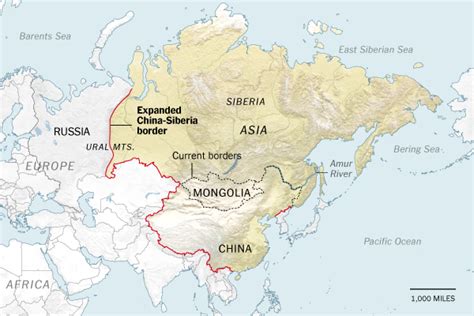siberia frontier china mongolia arcaelogican excavation griffin altai mountains An article that explores the history of Tuva, a Turkic-speaking people of South Siberia, in Chinese and Russian sources. It discusses the geography, population, political status, and cultural . 2024 KUBOTA, U10-5 Excavators - Mini (up to 12,000 lbs), Kubota U10-5 for sale. This mini excavator is perfect for digging trenches. If you have any q
0 · south siberia in china
1 · caves in mongolia
2 · buddhist caves in mongolia
3 · altai mountains mongolia
4 · altai mountains ice margins
5 · altai mountains hunting
6 · altai mountains archaeology
BOBCAT 341 Auction Results. Search - 0 Lots past auction price results & sort by manufacturer, model, year, price, location, sale date, and more.Browse a wide selection of new and used TAKEUCHI TB138 Excavators for sale near you at .
south siberia in china
An article that explores the history of Tuva, a Turkic-speaking people of South Siberia, in Chinese and Russian sources. It discusses the geography, population, political status, and cultural . Our survey team located, documented, and examined 25 caves from four regions in the Gobi-Altai Mountains in western Mongolia. We found that most caves do not contain .The typological parallels between the archaeological finds from Liushui and Taklamakan and those from Siberia, Kazakhstan, Mongolia, and northern China might suggest long-distant .
The transition from hunting to herding transformed the cold, arid steppes of Mongolia and Eastern Eurasia into a key social and economic center of the ancient world, but .
caves in mongolia
buddhist caves in mongolia
Learn about the ancient Pazyryk culture of the Altai Mountains, a Scythian-Siberian type culture with rich artistic and trade connections. Discover the treasures of the frozen . A fundamentally new phase in the history of Mongolian archaeology began in 1995 with the formation of the trilateral Joint Mongolian-Russian-American Archaeological . The location and geographic extent of the ancient Scythia varied over time, encompassing the Altai-Sayan region and the adjacent parts of Mongolia, North China and .
Four archaeological sites along the western frontier of China and Mongolia were analyzed for cranial trauma patterns. These patterns were then used to determine levels of violence, who .
We have examined 40 assemblages from the following regions: Russian (Gorny or Mountainous) Altai, Central Siberia, Eastern Siberia, the Mongolian Altai and Dzungaria, .Archaeological finds of the last several decades in China, Mongolia, and South Siberia encourage a reconsideration of the nature and extent of cultural exchange between Zhou China and the .An article that explores the history of Tuva, a Turkic-speaking people of South Siberia, in Chinese and Russian sources. It discusses the geography, population, political status, and cultural .
Our survey team located, documented, and examined 25 caves from four regions in the Gobi-Altai Mountains in western Mongolia. We found that most caves do not contain .The typological parallels between the archaeological finds from Liushui and Taklamakan and those from Siberia, Kazakhstan, Mongolia, and northern China might suggest long-distant .
used skid steer tree puller
The transition from hunting to herding transformed the cold, arid steppes of Mongolia and Eastern Eurasia into a key social and economic center of the ancient world, but .
Learn about the ancient Pazyryk culture of the Altai Mountains, a Scythian-Siberian type culture with rich artistic and trade connections. Discover the treasures of the frozen . A fundamentally new phase in the history of Mongolian archaeology began in 1995 with the formation of the trilateral Joint Mongolian-Russian-American Archaeological . The location and geographic extent of the ancient Scythia varied over time, encompassing the Altai-Sayan region and the adjacent parts of Mongolia, North China and .Four archaeological sites along the western frontier of China and Mongolia were analyzed for cranial trauma patterns. These patterns were then used to determine levels of violence, who .
We have examined 40 assemblages from the following regions: Russian (Gorny or Mountainous) Altai, Central Siberia, Eastern Siberia, the Mongolian Altai and Dzungaria, .Archaeological finds of the last several decades in China, Mongolia, and South Siberia encourage a reconsideration of the nature and extent of cultural exchange between Zhou China and the .
An article that explores the history of Tuva, a Turkic-speaking people of South Siberia, in Chinese and Russian sources. It discusses the geography, population, political status, and cultural . Our survey team located, documented, and examined 25 caves from four regions in the Gobi-Altai Mountains in western Mongolia. We found that most caves do not contain .The typological parallels between the archaeological finds from Liushui and Taklamakan and those from Siberia, Kazakhstan, Mongolia, and northern China might suggest long-distant .

The transition from hunting to herding transformed the cold, arid steppes of Mongolia and Eastern Eurasia into a key social and economic center of the ancient world, but .
Learn about the ancient Pazyryk culture of the Altai Mountains, a Scythian-Siberian type culture with rich artistic and trade connections. Discover the treasures of the frozen .
A fundamentally new phase in the history of Mongolian archaeology began in 1995 with the formation of the trilateral Joint Mongolian-Russian-American Archaeological . The location and geographic extent of the ancient Scythia varied over time, encompassing the Altai-Sayan region and the adjacent parts of Mongolia, North China and .
Four archaeological sites along the western frontier of China and Mongolia were analyzed for cranial trauma patterns. These patterns were then used to determine levels of violence, who . We have examined 40 assemblages from the following regions: Russian (Gorny or Mountainous) Altai, Central Siberia, Eastern Siberia, the Mongolian Altai and Dzungaria, .
altai mountains mongolia
With a 4,000 lbs capacity, 0.03 cbm wide bucket, and a versatile boom swing, the TYPHON TERROR XVIII performs reliably and maneuverably in various conditions. From gardens and .
siberia frontier china mongolia arcaelogican excavation griffin altai mountains|altai mountains ice margins